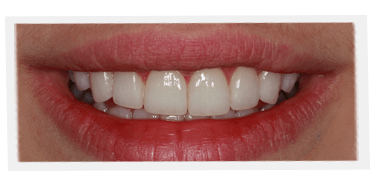
Bridges
There is some dental work that requires a very skilled professional to successfully complete. This is the case when a patient requires a bridge. Bridges are used to form a solid structure that holds an artificial tooth (called a pontic) between two crowned teeth when a gap is formed from the removal of a tooth. Not all dentists in the city of Toronto can perform such a procedure, but if you live there or in the GTA and find yourself in need of a bridge, Dr. Ed Philips is one such cosmetic dentist that can handle your issues. His studio is located in the city and is outfitted with state-of-the-art technology for fashioning crowns, bridges and completing procedures of all kinds.
What are the benefits of getting a bridge?
Keeping teeth in place
For the most part, teeth hold each other in place due to the strength of the root structure and hardness of the enamel. When a tooth is removed, the gap that remains will allow for other teeth in the mouth to shift. This can be prevented with the help of a bridge. The strength of two crowns and a pontic fused with metal or porcelain will generally prevent any additional shifting.
Maintaining facial structure
Teeth rooted into the jawbone contribute to the shape of the patient’s face. For this reason, if a tooth is missing, the gum, jaw and cheek can essentially cave-in slightly, which will give the patient’s face a sunken look to it. Utilizing a bridge can successfully stop this process.
Repairing smiles
A damaged or missing or missing tooth in a conspicuous place can really hurt a beautiful smile. This can also make the individual self-conscious about their appearance, which negatively affects social situations and mental health. Patients who have bridges installed can feel confident in their smiles and when they talk to others, which contributes to a more outgoing personality.
Bite pattern support
Missing a tooth can affect how the upper and lower teeth hit when the mouth is closed, which can contribute to a sore jaw and misaligned, crooked teeth over an extended period of time. Patients having a bridge installed can expect to have a normal bite pattern with equal support on both sides of their mouths.
Speaking and chewing
When individuals are missing teeth, the extra space inside the mouth can make it difficult to chew foods. The tongue may struggle to form words with gaps in between teeth. These issues can be resolved by filling the space with a perfectly placed bridge.
What are the different types of bridges?
Traditional bridge
This is the most common form of bridge and involves the replacement of one or two missing teeth that are supported by placing crowns on either side of the space. The replaced artificial teeth are called pontics. Although traditionally these bridges are made from a porcelain fused to metal material, they traditionally are not ideally aesthetic. Here at The Studio, Dr. Philips in most cases uses an all ceramic porcelain system thereby giving ideal aesthetics, strength and function.
Cantilever bridge
The Cantilever bridge is made up of a single crown supporting a single missing tooth. When possible this avoids the involvement of a natural tooth that would traditionally have to be crowned to support the pontic. This type of bridge is mostly designed in situations where there is one missing front tooth and the remaining teeth are natural and there is an attempt being made to minimize anymore involvement of the remaining natural teeth. It is usually not supportive enough to treat missing back teeth.
Maryland bonded bridge
This is an effective bridge because it also draws on the strength of the two adjacent teeth, and they do not need to be made into a crown the way a traditional bridge would require. That makes this a less expensive option and also one that is ideal for front teeth, where crowns or traditional bridges would be difficult to create. The Maryland bonded bridge uses an artificial tooth made from porcelain fused with metal or porcelain that is held in place by two wings that are attached to the back of the adjacent teeth.
Procedure
A dental bridge begins with the dentist shaving down the two adjacent teeth on either side of the gap. He will also clean out any minor tooth decay and perform a build-up on either tooth if necessary. Then the dentist will create a mold of the space consisting of the two crowns and vacant gap. This will be sent to a dental lab where a single molded piece will be fabricated that serves as both crowns and the false tooth in between them. While the permanent crown is being made, the patient can wear a temporary one that is set with weak cement that can be easily removed.
After the permanent bridge arrives, the patient will come in for a fitting and if the bridge looks and feels correct, the dentist will go ahead and sand off any excess cement then set the permanent bridge. Skilled dentists like Dr. Ed Philips can generally complete this process to the patient’s liking with no additional appointments, but they will always make sure the fit matches the patient’s bite pattern and does not impede any other teeth.
Recovery
The recovery process for a dental bridge is very short as any trauma to the area is generally resolved between the first and second appointments. Patients in need of bridges in the Toronto area would do well to secure an appointment with Dr. Ed Philips as he specializes in all forms of cosmetic dentistry that includes veneers and bridges. The GTA has many dentists of varying skill levels, so it is important to choose wisely for a procedure such as this that will remain in your mouth for upwards of ten years.



